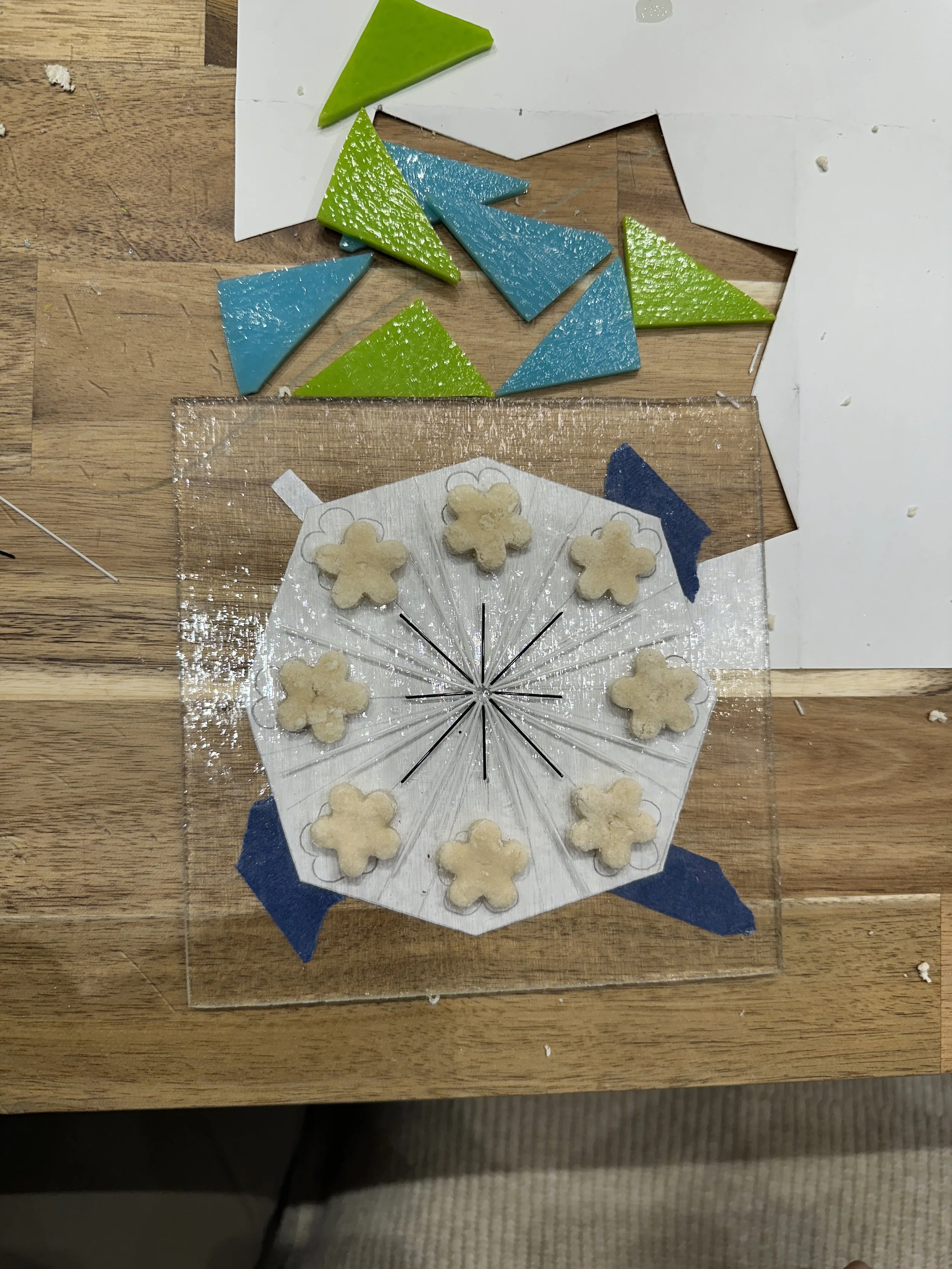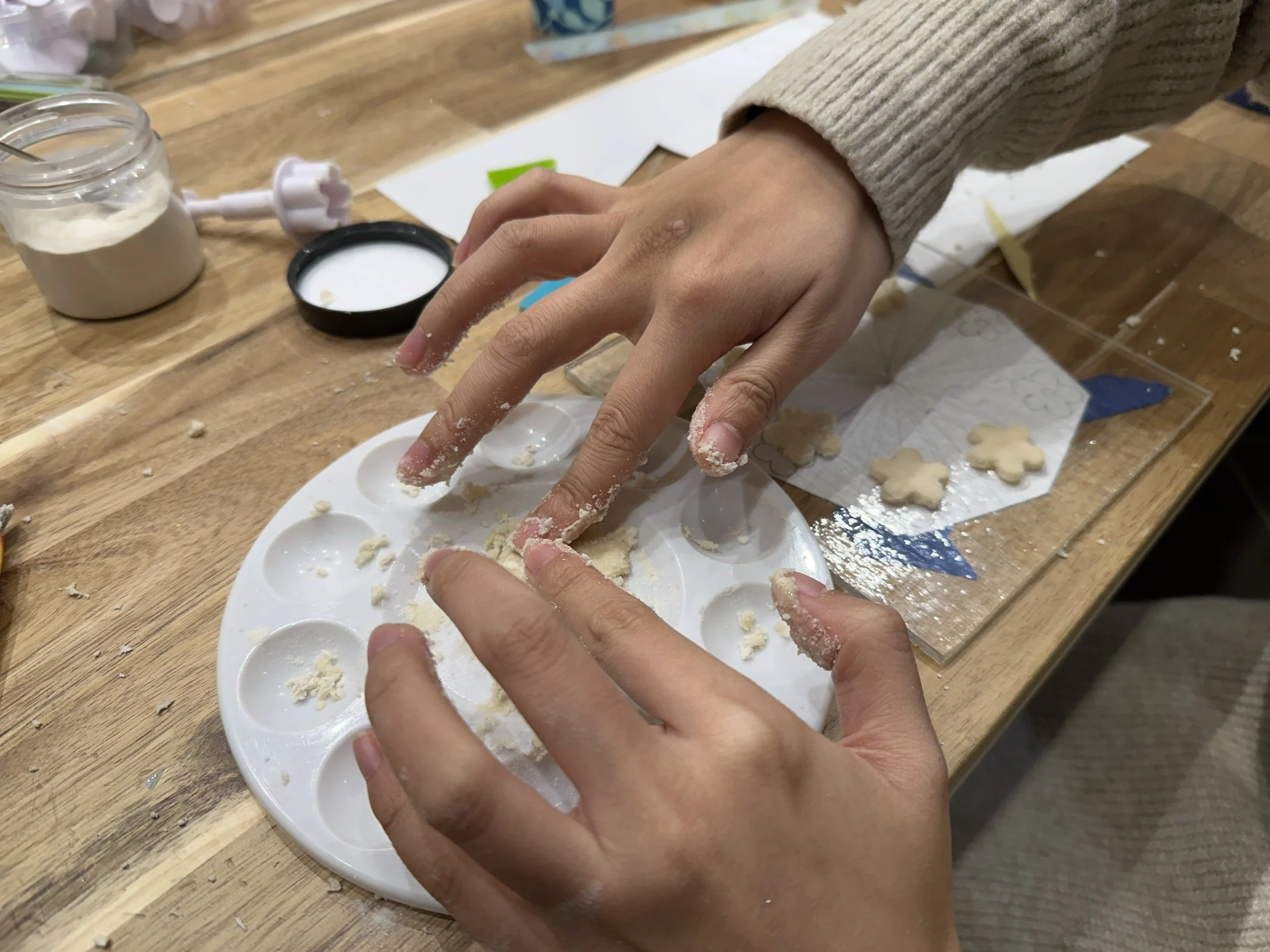Glass Makeing
3/31/2025
There’s something magical about glass—the way it catches the light, the colors, the textures, and the fact that something so delicate starts from something as basic as sand. This time, I got the chance to design, experiment, and piece together my own little glass plate from scratch. In this section, I’ll walk you through a bit of the history of glassmaking, some of the techniques I learned, and my own messy but fun experience of turning shards and sand into something beautiful.
History
The art of glassmaking dates back over 4,000 years, with some of the earliest examples discovered in ancient Mesopotamia and Egypt. Initially, glass was a rare and luxurious material, used primarily for beads, small vessels, and decorative inlays. These early pieces were made by heating and fusing crushed quartz or sand with plant ash and lime.
By the time of the Roman Empire, around the 1st century BCE, glassmaking underwent a major transformation with the invention of glassblowing. This technique made glass production faster, cheaper, and more accessible, shifting it from an elite commodity to a household material. Roman glassmakers became masters of creating functional and decorative glassware, a tradition that spread across Europe and the Mediterranean.
During the Middle Ages, glassmaking knowledge continued to develop, with centers like Venice’s Murano Island becoming famous for fine glass art and innovation, particularly in colored glass, crystal-clear glass, and millefiori patterns. In the 19th and 20th centuries, glassmaking evolved further with the rise of industrial production and studio glass movements, where artists began to reclaim glass as a personal and creative craft rather than just mass production.
Today, glassmaking blends ancient methods with modern technology—ranging from handmade glass art to high-precision industrial glass used in architecture, technology, and design.
Techniques of Glassmaking
Glassblowing: Gathering molten glass on the end of a blowpipe and inflating it into a bubble to form hollow objects like vases and bowls. This is one of the most iconic and challenging glassmaking techniques.
Kiln Forming (Fusing and Slumping): Cutting and layering pieces of cold glass and heating them in a kiln until they fuse together or slump into molds. This technique allows for flat panels, dishes, and decorative patterns.
Lampworking (Flameworking): Shaping glass rods and tubes over a small, controlled torch flame. Often used for making beads, figurines, and fine details.
Casting: Pouring molten glass into molds to create solid forms. This technique allows for sculptural and detailed glass pieces.
Cold Working: Techniques like cutting, grinding, polishing, sandblasting, or engraving done after the glass has cooled. These methods refine shapes, add texture, or create intricate surface details.
Stained Glass Assembly: Cutting colored glass pieces and joining them together with lead came or copper foil, typically seen in windows and decorative panels.
Etching and Sandblasting: Removing the surface layer of glass using chemicals or abrasive materials to create frosted, patterned, or matte effects.
My Fun Journey With Glass Making
The process of making my own glass plate was a lot of fun and surprisingly hands-on. I started by drawing out a design I wanted to create. I wanted to try as many techniques as possible in one piece, so I intentionally designed something that would let me experiment with all the different methods available in the workshop. After sketching, I picked out the glass pieces I wanted to use—different shapes, colors, and textures that would work well together.
There were a few techniques offered at the workshop that I got to try. The first one was cutting glass. We used a special glass cutter to score the glass, but it only cuts in straight lines, which makes it tricky if you want to create curves or circles. To make curved shapes, you basically have to cut the glass into many small straight pieces to gradually form a curve. It was a bit tedious but very satisfying once the pieces came together.
The second technique involved using glass sand and glue with a mold to shape small decorative elements. It felt a lot like playing with sticky sand, which made the process really fun. The tricky part was figuring out the right ratio of glue to sand so that the finished piece would release from the mold without breaking. I made a few little glass flowers using this method—some of them developed cracks, but I was happy that those cracks didn’t show up in the final piece after firing.
The third technique I used was drawing on the glass. The workshop had special glass paints that let you draw directly onto the glass surface to create shapes and patterns. I used this to add details and lines to my design. The last decorative technique involved using pre-made shapes and forms of glass to add extra texture. For the center of my plate, I used stone-like glass pieces, and around them, I arranged thin strings of glass to create a kind of firework effect in the middle of the plate.
The final step couldn’t be done in the workshop; they had to fire the glass in a separate kiln. The idea is to layer two sheets of glass—one with my cut glass triangle pattern, and the other with my sand glass flowers and thin string firework details—on top of each other. When they’re fired together at a lower temperature, the glass melts just enough to fuse without losing the shapes and textures I created. When I finally saw the finished piece, I was so happy with the result. The patterns blended beautifully, and I now have a small, unique glass plate at home that’s not only decorative but also functional.
Looking back on the experience, I do wish the workshop had included a short introductory session explaining the different techniques and what’s possible or not possible with each one. That would’ve helped me better understand the process and plan my design more intentionally.
I went to the workshop with a few friends, and we were all working on different glass projects while chatting and sharing ideas. It turned out to be a really fun, relaxing activity—perfect for social bonding while learning something new and creative. It definitely made me appreciate how much craftsmanship and technique goes into even the simplest-looking glass objects.







